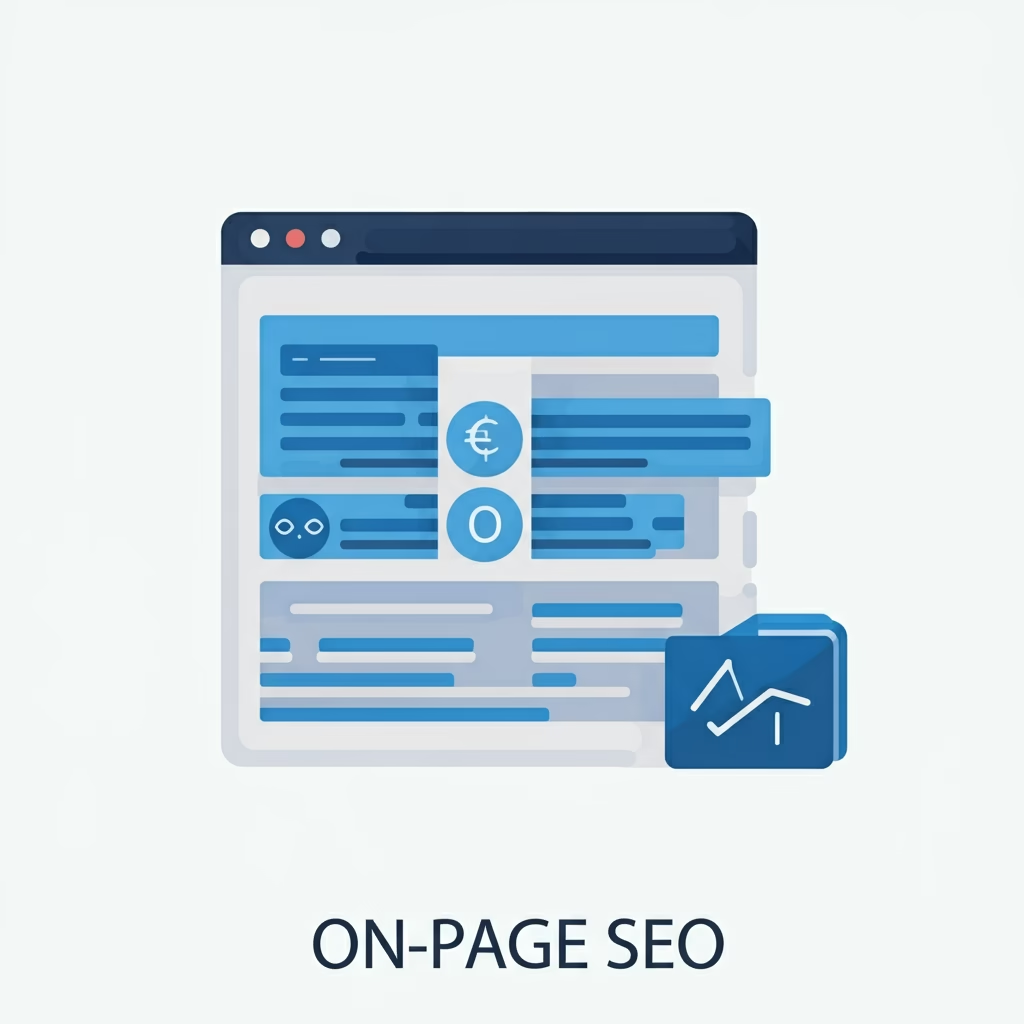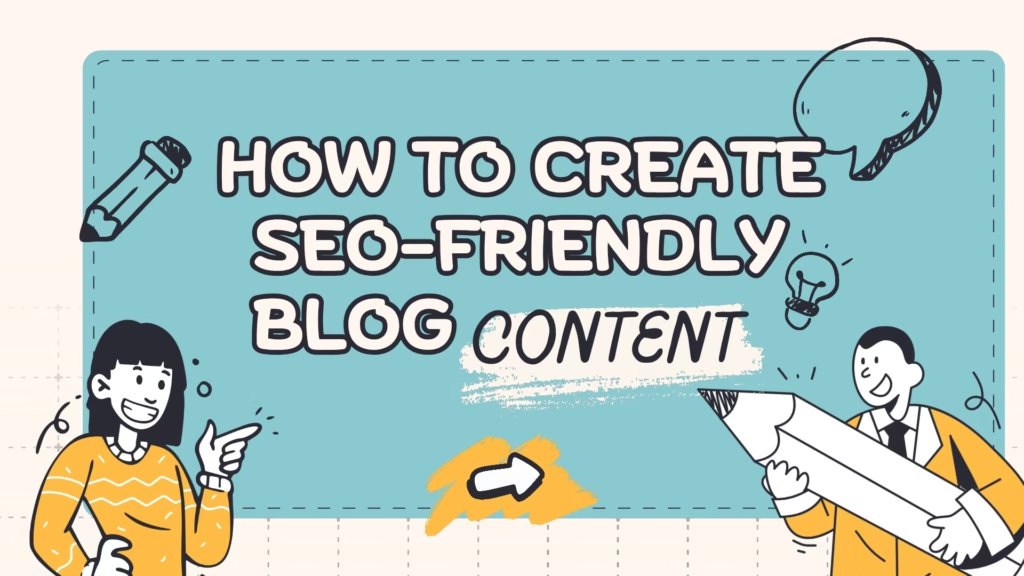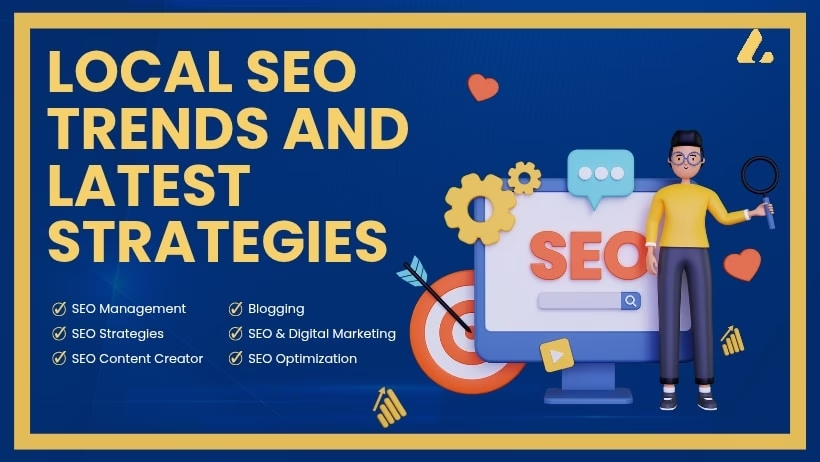Have you ever spent hours crafting a blog post, carefully choosing your words and adding visuals, but still couldn’t get the traffic you expected? If this sounds familiar, it’s likely because your blog post isn’t SEO-friendly.
Writing SEO-friendly blog posts isn’t just about adding a bunch of keywords. It’s about making sure that search engines can find your content and understand its value. Whether you’re a newbie or have been blogging for a while, mastering SEO is essential to rank higher on Google and drive organic traffic.
In this comprehensive guide, I’ll walk you through the step-by-step process of writing blog posts that are not only optimized for search engines but also engage your readers. No technical jargon, just practical tips and easy-to-follow strategies to help your blog posts stand out in search results.
By the end of this post, you’ll know exactly how to write SEO-friendly blog posts that attract traffic, rank well, and keep your audience coming back for more.
Let’s dive in and start writing blog posts that rank on Google!
Great! Ab hum “What Is an SEO-Friendly Blog Post?” section ko likhte hain, jo SEO-friendly, engaging, aur humanized hoga, aur saath hi easy-to-understand rahega.

What Is an SEO-Friendly Blog Post?
Before we dive into writing your blog posts, let’s first understand what an SEO-friendly blog post really is. In simple terms, an SEO-friendly blog post is a piece of content that is optimized for search engines and designed to provide value to your readers.
But here’s the catch: SEO-friendly doesn’t mean you need to write content that’s overly technical or stuffed with keywords. Instead, it’s about striking a balance between creating content that Google can rank and providing helpful, high-quality information that your audience will love.
Key Elements of an SEO-Friendly Blog Post:
- Keyword Optimization – Using the right keywords in the right places (like the title, headers, and throughout the content) helps search engines understand what your post is about. But remember: don’t overdo it. Keywords should feel natural and should be placed where they make sense.
- Quality Content – Your blog post should offer real value. Google rewards content that answers questions, solves problems, or entertains readers. So, focus on delivering useful and informative content rather than just trying to rank for a keyword.
- Readability – Easy-to-read content is key for both readers and search engines. Short paragraphs, bullet points, subheadings, and images all contribute to a better reading experience, and Google takes this into account when ranking content.
- Mobile-Friendly – With more people browsing on mobile, Google now prioritizes mobile-friendly websites. Make sure your content looks great on all devices.
- Engagement – Content that gets shared, commented on, or linked to has more chances of ranking well. By making your blog posts engaging and relatable, you encourage people to interact with your content, which can improve its performance.
In short, an SEO-friendly blog post is one that both appeals to search engines and delivers real value to readers. When you master this balance, you’ll be on your way to creating blog posts that rank higher on Google and attract more organic traffic.
Great! Ab hum “Understanding User Intent” section likhte hain, jo SEO-friendly, engaging, aur easy to understand hoga.
Understanding User Intent: Why It’s Crucial for SEO Success
When you’re writing blog posts, it’s easy to get caught up in the technical aspects of SEO—keywords, meta descriptions, and backlinks. But there’s one crucial thing you must understand if you want your content to truly rank: User intent.
In simple terms, user intent refers to the purpose behind a search query. When someone types a question or a keyword into Google, they’re looking for something specific. Your job is to figure out what they want and provide the most relevant answer in your blog post.
The 3 Types of User Intent:
- Informational Intent
The user is looking for information. They want to learn about a topic or solve a problem. For example, someone searching for “how to write SEO-friendly blog posts” is likely looking for a guide, just like the one you’re reading right now.
Tip: If you’re targeting informational intent, make sure your content answers the question in a clear, helpful way. Think of how-to guides, tutorials, and listicles. - Navigational Intent
The user wants to visit a specific website or page. For example, “Facebook login” or “Amazon homepage” are navigational searches.
Tip: If you’re targeting navigational intent, focus on making your website easy to find and navigate. This is more for established brands, but it’s still important to keep in mind. - Transactional Intent
The user is ready to make a purchase or take a specific action. They may be searching for things like “buy SEO tools” or “best website hosting services.”
Tip: If your content targets transactional intent, make sure to include clear call-to-actions (CTAs) and relevant product links. Affiliate links or product recommendations work great for this.
Why User Intent is Important for SEO:
Google’s ultimate goal is to serve users the best, most relevant content based on their search intent. So, if your blog post matches the intent behind the search query, Google is more likely to rank it higher in the search results.
Example:
Imagine someone searches for “best SEO tools for beginners.” If your post offers a list of top SEO tools with descriptions, reviews, and a comparison of features, it matches the user’s intent for informational content and is likely to rank well.
Tip: When researching keywords for your blog post, always consider the user’s intent. Ask yourself: What is the person actually looking for when they search this term? Does your content meet that need?
Shukriya! Ab hum “Keyword Research: The Foundation of SEO” section likhte hain, jo engaging, helpful, SEO-friendly, aur easy to understand ho.

Keyword Research: The Foundation of SEO
If you want your blog posts to rank on Google, keyword research is a must. But what exactly is keyword research, and how do you do it effectively? Let’s break it down.
In simple terms, keyword research is the process of identifying the words and phrases that people are searching for on Google. By using these keywords strategically in your blog posts, you make it easier for search engines to understand what your content is about, and more likely to rank it high in search results.
Why Keyword Research is Crucial for SEO:
Without the right keywords, your content might get buried under thousands of other blog posts. Keyword research helps you discover what your audience is actually searching for, and by targeting these keywords, you increase your chances of appearing in search results. It’s all about being relevant to what people want.
How to Do Keyword Research Like a Pro:
- Start with a Seed Keyword
Begin by brainstorming broad topics related to your niche. For example, if you’re writing a blog about SEO, a seed keyword might be “SEO tips” or “how to improve SEO.”
Tip: Don’t worry about making your seed keyword perfect. It’s just a starting point for finding more specific, long-tail keywords. - Use Keyword Research Tools
Once you have your seed keyword, use tools like SEMrush, Google Keyword Planner, or Ubersuggest to find related keywords, their search volume, and difficulty level. These tools help you find long-tail keywords (more specific phrases) that are often less competitive but still highly relevant.
Example:- Seed keyword: “SEO tips”
- Long-tail keyword: “How to improve SEO for beginners”
These long-tail keywords are often easier to rank for and provide more specific value to users.
- Analyze Search Intent
As you discover new keywords, make sure they match the search intent of your target audience. Are people looking for information? A product? A service? Your keywords should reflect their needs.
Tip: Use Google to check the type of content ranking for a keyword. Is it a blog post, product page, or tutorial? Make sure your content matches the search intent behind the keyword. - Assess Keyword Difficulty
Not all keywords are equal. Some are highly competitive, while others have lower competition and are easier to rank for. Focus on a mix of high and low-difficulty keywords.
Tip: Tools like SEMrush show you the keyword difficulty score for each keyword, helping you decide which ones to target. - Look for Content Gaps
A great way to discover new keywords is by identifying content gaps—topics that your competitors aren’t fully covering. Use tools like Ahrefs or SEMrush to see what keywords your competitors are ranking for and where you can add more value.
Example: If your competitors aren’t covering “SEO tips for bloggers”, that could be a great topic to target.
Where to Use Your Keywords in a Blog Post:
- Title Tag: Include your primary keyword in the title of your post (this is one of the most important ranking factors).
- Meta Description: A well-crafted meta description with your keyword helps both users and search engines understand what your post is about.
- Headers: Use your keyword in at least one header (H1, H2, or H3).
- Introduction: Mention your keyword naturally within the first 100 words of your post.
- Body: Use variations of your keyword throughout the post, but keep it natural. Don’t over-optimize.
Tip: Always focus on quality over quantity when using keywords. Your content should flow naturally and provide value to your readers. If you make your content too keyword-heavy, it can feel forced and turn readers away.
Got it! From now on, wherever external links are needed, I’ll include them for you in the content. Let’s proceed with the next section. Here’s the “Creating an Outline Before You Write” part:
Creating an Outline Before You Write: Why It’s Key to SEO Success
Before you jump into writing your blog post, taking a few minutes to create an outline can save you hours of frustration later. An outline helps you organize your thoughts, structure your content, and ensure that you cover all necessary points to satisfy both search engines and readers.
Creating a blog post without a clear structure is like building a house without a blueprint. Sure, it might come together eventually, but the process will be messy, and the final result might not be as solid as it could have been.
Why an Outline is Important for SEO:
- Ensures Content Flow:
With a structured outline, your post will have a natural flow, guiding readers through the content in a way that’s easy to understand. This also helps keep your bounce rate low, which is great for SEO. - Helps You Focus on Key Points:
An outline helps you stay focused on your target keywords and the main message of your post, ensuring you don’t veer off-topic. - Improves Readability:
Breaking down your content into smaller, manageable sections (with headings and subheadings) makes it easier for both readers and search engines to digest. - Boosts Engagement:
A well-organized post encourages readers to engage more with your content. When people find what they’re looking for quickly, they’re more likely to share your post, comment, or spend more time on your page.
How to Create an Effective Outline:
- Start with the Title:
Your title should clearly state the main topic and include your target keyword. It should be catchy enough to make readers want to click but also optimized for SEO. - Write a Brief Introduction:
In the introduction, state the problem or topic you’ll address and give readers a reason to keep reading. This should also include your primary keyword. - Break Down the Main Points:
Think about the main points you want to cover in your post. For example, if you’re writing about “How to Write SEO-Friendly Blog Posts,” the main points could include:- What is SEO?
- Why is SEO important?
- How to do keyword research
- Best practices for on-page SEO
- Writing engaging, humanized content

- Use Subheadings for Structure:
Subheadings (H2s, H3s) are essential for breaking your content into easy-to-read sections. These headings should be descriptive and include related keywords to help with SEO. - End with a Call-to-Action (CTA):
Every blog post should have a CTA. This could be asking readers to subscribe to your newsletter, check out related posts, or even buy a product. Make sure the CTA is clear and action-oriented.
Example Outline for an SEO-Friendly Blog Post:
- Title: How to Write SEO-Friendly Blog Posts That Rank on Google
- Introduction: Explain the importance of writing SEO-friendly content.
- What Is an SEO-Friendly Blog Post?
- Definition of SEO-friendly content
- Key factors of SEO-friendly posts
- Keyword Research: The Foundation of SEO
- Why keyword research matters
- How to do keyword research
- Tools for keyword research (Google Keyword Planner, SEMrush)
- On-Page SEO: Optimizing Your Content
- Title tag
- Meta description
- Internal and external links
- Writing Engaging Content
- How to write for both readers and search engines
- Using a friendly, conversational tone
- Conclusion and CTA
- Summarize key takeaways
- Ask readers to comment or share the post
Writing Engaging, Human-Like Content: How to Keep Readers Hooked
Now that you have your keywords, outline, and structure ready, it’s time to dive into the most important part of your blog post: the content itself. Writing engaging, human-like content isn’t just about packing in keywords. It’s about creating a connection with your readers, making your blog post interesting, and ensuring it’s easy to follow.
Why Engaging Content Matters for SEO:
- Lower Bounce Rate:
When your content is engaging, readers are more likely to stay on your page longer, reducing your bounce rate. A lower bounce rate signals to Google that your content is valuable, which can help improve your rankings. - Encourages Sharing and Interaction:
If readers find your content helpful, they’re more likely to share it with their networks. Plus, the more comments and social shares your post gets, the better it will perform in search results. - Increased Readability:
Engaging content is easy to read and understand. By using a conversational tone, short sentences, and plenty of white space (like bullet points and subheadings), your content becomes more accessible and enjoyable.
Tips for Writing Engaging, Human-Like Content:
- Write as If You’re Talking to a Friend
One of the easiest ways to make your content more engaging is by writing as if you’re having a conversation with your reader. Avoid overly formal language and aim for a friendly, approachable tone.
Example: Instead of saying, “One must use the correct methods for SEO implementation,” you could say, “If you want your blog to rank, here are some easy SEO tips you should follow!” - Tell Stories and Use Examples
People love stories. Whether it’s a personal anecdote, a case study, or a real-world example, incorporating stories into your content helps readers connect on a deeper level.
Example: “I once struggled to rank my first blog post. But after using the right SEO strategies, my traffic grew by 300% in just two months!” - Ask Questions to Engage Your Readers
Asking questions throughout your post encourages readers to think and engage with your content. Questions can make your post feel more interactive and invite readers to comment or share their thoughts.
Example: “Have you ever tried using these SEO techniques? What worked best for you?” - Keep Sentences and Paragraphs Short
Long, dense paragraphs can overwhelm readers. Keep your sentences and paragraphs short and to the point. This increases readability and ensures that readers stay focused.
Tip: Use bullet points and numbered lists whenever possible to break up content and highlight key points. - Use a Conversational Tone with Simple Language
Write like you’re speaking directly to your reader. Avoid jargon and complex language that could confuse your audience. Instead, aim for a clear, easy-to-follow style.
Example: “SEO might sound complicated, but it’s really about following some simple steps that anyone can learn!” - Use Power Words and Emotionally-Driven Language
Emotionally-driven language can make your content more compelling. Words like “proven,” “easy,” “simple,” and “amazing” are powerful in grabbing attention and triggering interest.
Example: “With these simple SEO tips, you can skyrocket your blog traffic in no time!”
How to Balance SEO and Engaging Content:
While it’s essential to optimize for search engines, your content should never feel robotic or over-optimized. The key to writing human-like content is to use keywords naturally without stuffing them into every sentence.
For example, if your target keyword is “SEO-friendly blog posts,” use it where it fits naturally:
- “Writing SEO-friendly blog posts doesn’t have to be complicated.”
- “With the right tools, you can easily create SEO-friendly blog posts that rank well.”
Example of Engaging Content in Action:
Let’s say you’re writing about “how to improve SEO for beginners.” Instead of simply listing a bunch of technical steps, try to make your content relatable:
- Instead of: “Conduct keyword research using Google Keyword Planner.”
- Say: “Start by using free tools like Google Keyword Planner. I know it can feel overwhelming at first, but trust me—it’s easier than it sounds!”
Great! Ab hum “On-Page SEO: Optimizing Your Content” section likhte hain, jo SEO-friendly, engaging, aur easy-to-understand hoga.

On-Page SEO: Optimizing Your Content for Search Engines
You’ve done the hard work of researching keywords, writing engaging content, and creating a solid outline. Now, it’s time to optimize your blog post for on-page SEO. On-page SEO refers to the techniques you use within your blog post to make it easier for search engines to understand what your content is about and rank it higher.
Why On-Page SEO Matters:
- Helps Search Engines Understand Your Content
On-page SEO tells search engines like Google what your blog post is about and why it’s valuable. It ensures that your content is well-structured, with the right keywords in the right places. - Improves User Experience
Good on-page SEO not only helps search engines but also makes your content more user-friendly. A well-optimized post is easier to read, navigate, and engage with. - Boosts Your Rankings
When you optimize your content with relevant keywords and structure, you increase the chances of ranking higher on search engine results pages (SERPs).
Key Elements of On-Page SEO:
- Title Tag Optimization
Your title tag is one of the most important elements for SEO. It tells both the reader and search engines what your post is about.- Tip: Include your primary keyword in the title and keep it under 60 characters to ensure it doesn’t get cut off in search results.
- Example: “How to Write SEO-Friendly Blog Posts: A Beginner’s Guide”
- Meta Description
The meta description is a short summary of your post that appears in search results under your title. While it doesn’t directly affect rankings, it influences click-through rates (CTR).- Tip: Write a compelling meta description with your target keyword and make it around 150-160 characters.
- Example: “Learn how to write SEO-friendly blog posts that rank on Google. Follow these simple tips to boost your blog’s visibility and traffic.”
- Use Headings and Subheadings (H1, H2, H3)
Headings help organize your content and make it more readable for both search engines and your readers.- Tip: Use your main keyword in the H1 (title of your post) and secondary keywords in H2s and H3s (subheadings).
- Example:
- H1: How to Write SEO-Friendly Blog Posts
- H2: Understanding SEO Basics
- H3: Why Keywords Matter
- URL Structure
Your URL should be clean, simple, and include your primary keyword.- Tip: Keep your URL short and relevant, avoiding unnecessary words or symbols.
- Example:
yourwebsite.com/how-to-write-seo-friendly-blog-posts
- Image Optimization
Images are a great way to enhance the user experience, but they should also be optimized for SEO.- Tip: Use descriptive file names for your images and add alt text that includes your keywords. This helps search engines understand the image content.
- Example: For an image about SEO, name the file
seo-friendly-blog-posts.jpgand use alt text like “SEO tips for writing blog posts.”
- Internal Linking
Internal linking refers to linking to other relevant content on your own website. This helps distribute link equity and keeps users engaged with more of your content.- Tip: Link to related blog posts within your content. Use descriptive anchor text (the clickable text) that gives readers an idea of what the linked content is about.
- Example: “For more information on keyword research, check out our guide on finding the best SEO keywords.”
- External Linking
External links to reputable sources can improve the credibility of your content.- Tip: Link to authoritative websites or research papers that support your claims. This signals to search engines that your content is trustworthy.
- Example: “According to Moz, the most effective SEO strategies are…”
- Mobile Optimization
More and more people are reading blog posts on their mobile devices. A blog that isn’t mobile-friendly will have a higher bounce rate and lower rankings.- Tip: Ensure your blog is responsive (it adjusts to different screen sizes) and loads quickly on mobile devices.
- Content Length
Longer content tends to rank better because it’s seen as more comprehensive. Aim for at least 1,500 words, but don’t sacrifice quality for length.- Tip: Ensure your content fully answers the user’s query without unnecessary fluff.
How to Keep Your Content Humanized While Optimizing:
While on-page SEO is essential, don’t forget that you’re writing for people, not just search engines. Here are a few tips to keep your content human-like and relatable while optimizing it:
- Use Conversational Language: Keep the tone friendly and approachable.
- Write for Your Audience: Your readers are looking for valuable information, so provide practical tips and actionable advice.
- Focus on Quality, Not Just Keywords: It’s important to balance optimization with creating genuinely helpful content that adds value to your audience.
Perfect! Ab hum “Conclusion and Final Thoughts” ka section likhte hain, jo SEO-friendly, engaging, aur humanized hoga.
Final Thoughts:
Now that you’ve learned the key steps for writing an SEO-friendly blog post—from understanding your audience to optimizing for on-page SEO—it’s time to put it all together. The ultimate goal is to create content that not only ranks well in search engines but also provides value to your readers.
Key Takeaways:
- Start with Solid Keyword Research
Before you write, identify your target keywords and understand what your audience is searching for. This sets the foundation for your content strategy. - Focus on Readability and Engagement
Make sure your content is easy to read and engaging. Use a friendly, conversational tone, and include stories, examples, and questions to keep readers hooked. - Optimize for On-Page SEO
Use your keywords strategically, optimize your title, meta description, and URL, and don’t forget to optimize images and add internal and external links. - Provide Value and Solve Problems
Your content should help your audience solve their problems. The more helpful and informative your blog post is, the more likely it will resonate with your readers and rank higher in search results. - Keep the User Experience in Mind
Beyond SEO, the user experience matters. Make sure your blog is mobile-friendly, fast-loading, and easy to navigate.
Now that you have all the tools and strategies, it’s time to get started! Follow these steps, and with consistent effort, you’ll begin to see improvements in both your rankings and your readers’ engagement.
If you’re ready to create an SEO-friendly blog post that ranks, start by choosing a topic and applying the tips we’ve discussed. Remember, SEO isn’t a one-time task—it’s a continuous process, and small improvements over time can lead to big results.
Have you tried writing SEO-friendly blog posts before? What strategies worked best for you? Share your thoughts in the comments below! If you found this post helpful, don’t forget to share it with others who might benefit from it.



